Vladislav Panov
CoHaptics: Development of Human-Robot Collaborative System with Forearm-worn Haptic Display to Increase Safety in Future Factories
Sep 13, 2021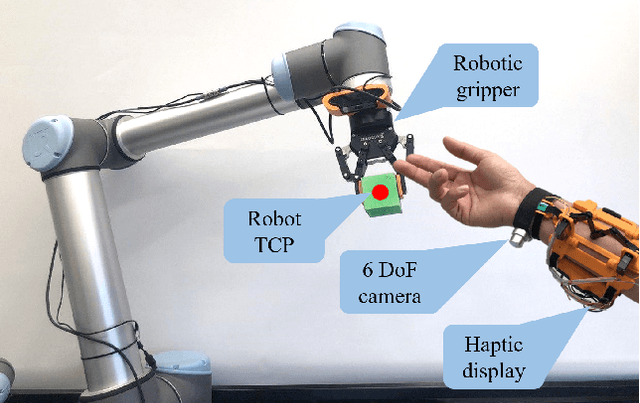
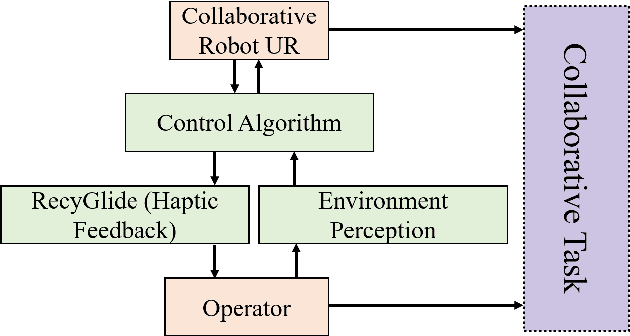
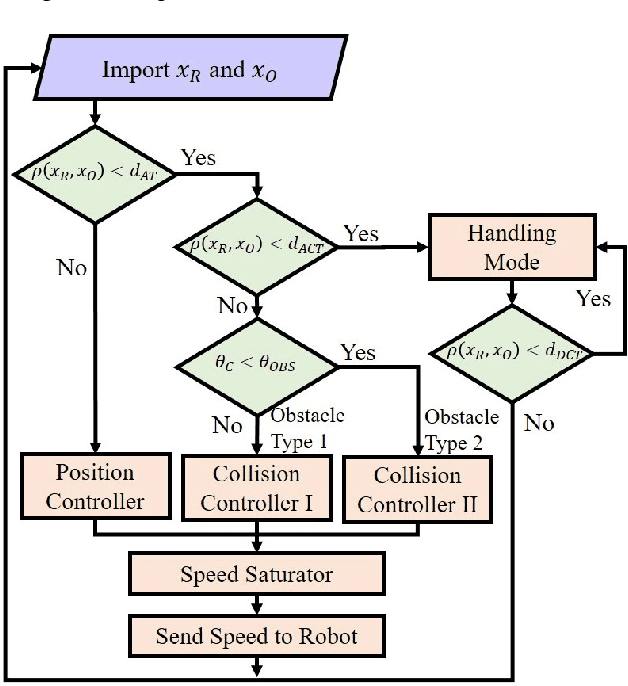
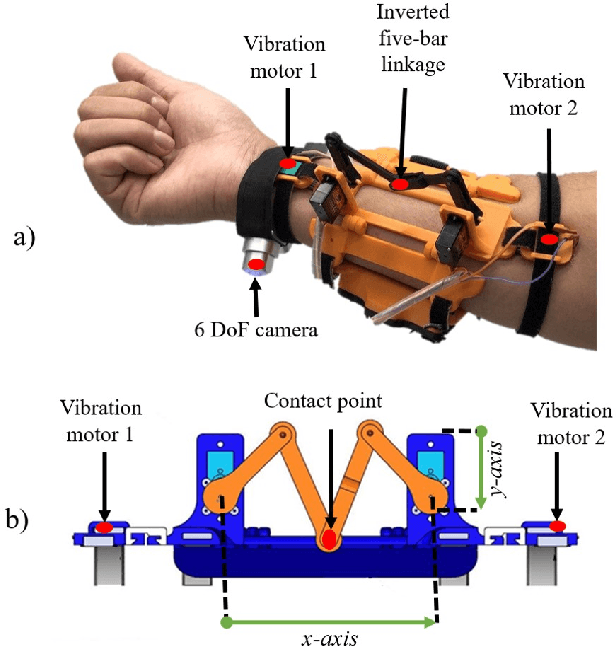
Abstract:Complex tasks require human collaboration since robots do not have enough dexterity. However, robots are still used as instruments and not as collaborative systems. We are introducing a framework to ensure safety in a human-robot collaborative environment. The system is composed of a haptic feedback display, low-cost wearable mocap, and a new collision avoidance algorithm based on the Artificial Potential Fields (APF). Wearable optical motion capturing system enables tracking the human hand position with high accuracy and low latency on large working areas. This study evaluates whether haptic feedback improves safety in human-robot collaboration. Three experiments were carried out to evaluate the performance of the proposed system. The first one evaluated human responses to the haptic device during interaction with the Robot Tool Center Point (TCP). The second experiment analyzed human-robot behavior during an imminent collision. The third experiment evaluated the system in a collaborative activity in a shared working environment. This study had shown that when haptic feedback in the control loop was included, the safe distance (minimum robot-obstacle distance) increased by 4.1 cm from 12.39 cm to 16.55 cm, and the robot's path, when the collision avoidance algorithm was activated, was reduced by 81%.
CobotGear: Interaction with Collaborative Robots using Wearable Optical Motion Capturing Systems
Jul 20, 2020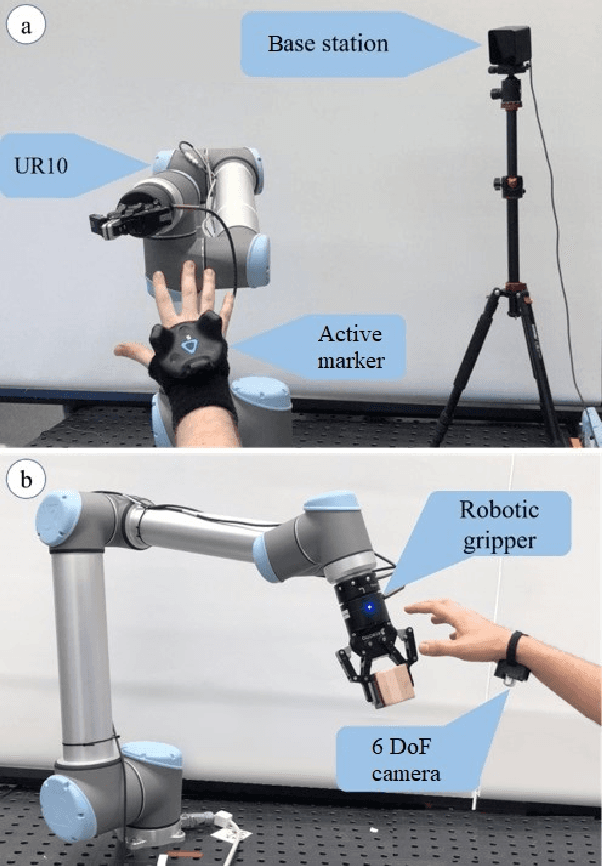
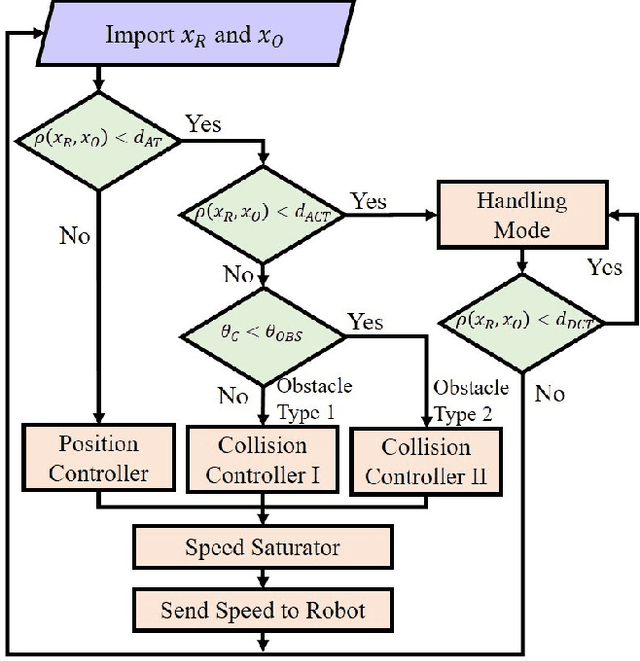
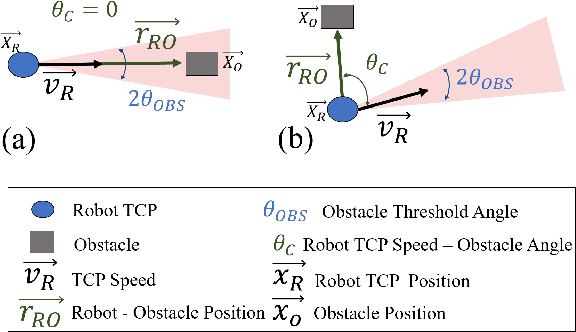
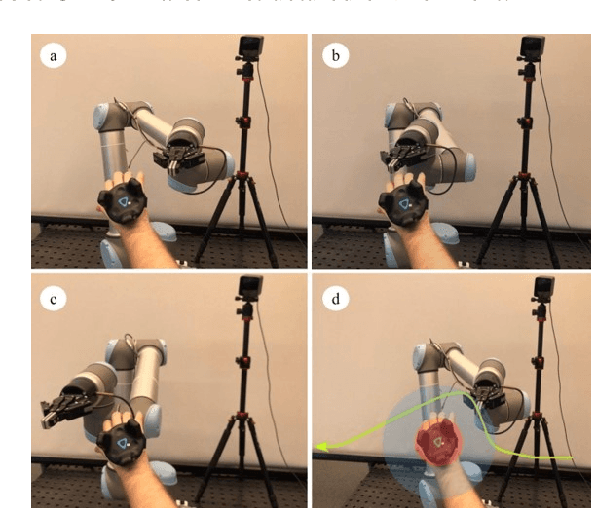
Abstract:In industrial applications, complex tasks require human collaboration since the robot doesn't have enough dexterity. However, the robots are still implemented as tools and not as collaborative intelligent systems. To ensure safety in the human-robot collaboration, we introduce a system that presents a new method that integrates low-cost wearable mocap, and an improved collision avoidance algorithm based on the artificial potential fields. Wearable optical motion capturing allows to track the human hand position with high accuracy and low latency on large working areas. To increase the efficiency of the proposed algorithm, two obstacle types are discriminated according to their collision probability. A preliminary experiment was performed to analyze the algorithm behavior and to select the best values for the obstacle's threshold angle $\theta_{OBS}$, and for the avoidance threshold distance $d_{AT}$. The second experiment was carried out to evaluate the system performance with $d_{AT}$ = 0.2 m and $\theta_{OBS}$ = 45 degrees. The third experiment evaluated the system in a real collaborative task. The results demonstrate the robust performance of the robotic arm generating smooth collision-free trajectories. The proposed technology will allow consumer robots to safely collaborate with humans in cluttered environments, e.g., factories, kitchens, living rooms, and restaurants.
 Add to Chrome
Add to Chrome Add to Firefox
Add to Firefox Add to Edge
Add to Edge